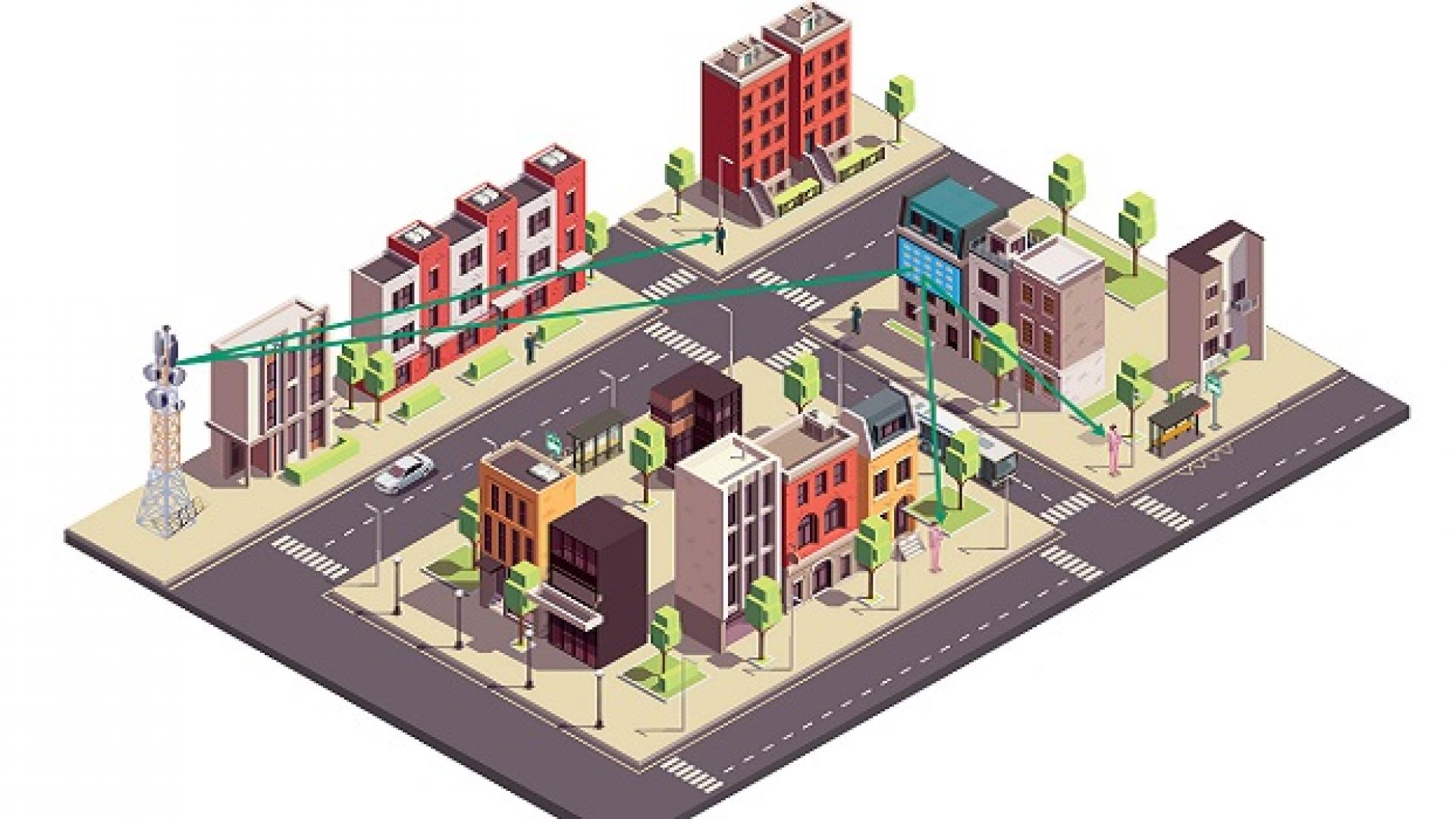© 2020 KAUST Mustafa Kishk & Maha M. Kamal
Specialized reflective panels located on top of buildings and deployed widely across a city could significantly improve network coverage, shows a KAUST modeling study.
Next-generation cellular networks (5G and beyond) will provide communication coverage to wider rural areas while improving data exchange rates to meet rapidly rising demand. In urban areas, in particular, obstacles in the form of buildings and other structures can impede wireless communication links, reducing mobile device signals, and slowing data exchange.
Research has shown that reconfigurable intelligent surfaces (RISs) hold great promise as a technology for eliminating communication "blind spots" caused by blockages. RISs are specially designed surfaces comprising multiple reflective elements that can modify and redirect incoming signals, allowing for better control and performance over an entire communication network. RISs can be opaque or transparent, and they are well established in terms of their energy efficiency and effectiveness at manipulating signals. An RIS system can use both localization and beam tracking technologies to pinpoint a user’s location and to follow their device—even if they are moving in a car at high speed.
“The RIS system and the way it reflects signals has been thoroughly studied in the literature, leading to various useful mathematical models,” explains postdoc Mustafa Kishk, who conducted the study with his advisor Mohamed-Slim Alouini. “We used one of these well-established models for RIS behavior in our system setup. Then, using a mathematical tool called stochastic geometry, we created a large-scale system that distributes RISs at random on the faces of buildings. We then analyzed the probable coverage gains under different scenarios.”
Read the full article


